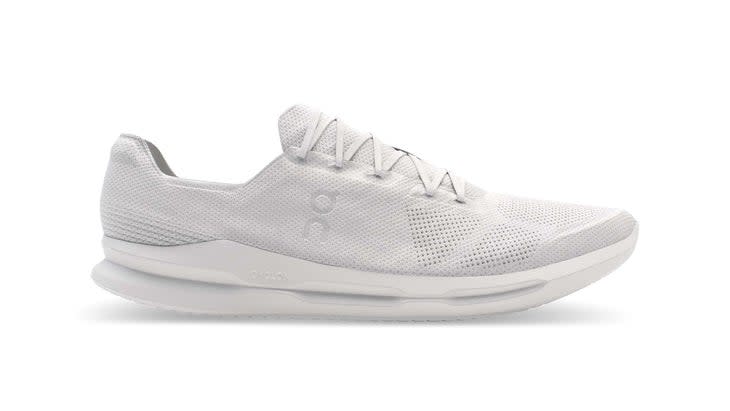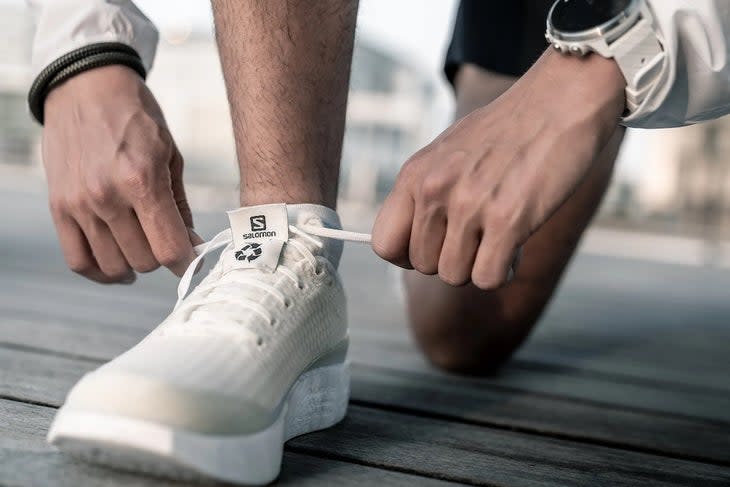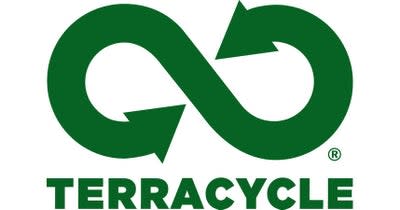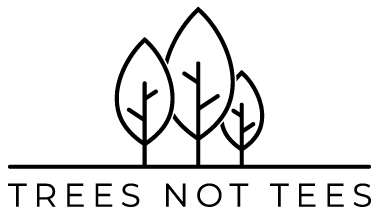This Planet-Conscious Running Gear Is Made of Beans and Discarded Fishing Nets
This article originally appeared on Outside
Whether you're preparing for a dream race or starting your first-ever trail running season, it always feels good to pull on a fresh, new pair of sneakers or a soft, well-tailored running shirt. At the beginning of this gear relationship, though, it's hard to consider where those goods will go at their life's end - typically, the dump.
In 2018, the United States generated 13 million tons of waste from clothing and footwear, estimates the EPA. The amount of that waste that was recycled was close to 1.7 million tons. That's a 13 percent recycling rate (excluding reuse, such as through thrift store donations). Where did the other 11.3 million tons of textile waste go in that one year? Landfills.
"By taking steps like reusing, repairing, upcycling or recycling apparel, we--the collective apparel industry--can help to reduce our impact on the environment," said Jess Rogers, Patagonia product lead of Trail Running and Hike. "Promoting a circular economy takes great effort from different steps in the product creation process, but also requires additional thought and consideration from consumers in how they use their dollars. However, every garment will eventually reach an end of life, hopefully after a very long, well-loved, and used life. Building garments for recyclability to feed back into recycling streams helps us continue this circular economy."
Remember the four R's of recycling: Reduce, Reuse, Recycle, Rethink. That fourth R means reminds us that sometimes, the best way to have a positive impact is to not buy new gear. But when you must, it's best to consider products focused on eco-friendly manufacturing methods.
To that end, here are some innovative examples of how product makers in the trail running world are helping to lessen the impact of goods.
RELATED: 5 Ways To Reduce Your Impact On The Trails
For Trail Runners
Recycled Shoes
On
The Swiss brand On recently launched a subscription-based service called the Cyclon featuring a running shoe dubbed the Cloudneo that's recyclable, which will be available to consumers this summer.
"A regular shoe is made with a large variety of different input materials, which makes it nearly impossible to recycle and repurpose," said Francois-Xavier Dosne, Head of Innovation Business Strategy at On. "A shoe is recyclable if it can be reused and created into something new. However, many shoes end up in landfills, because they are made with more than one material. Before you can recycle them, you'd have to disassemble the shoe to recycle each material separately. We solved this problem for the consumer with this subscription program: all they have to do is ship the shoe back to us and we'll handle the rest."
The Cloudneo is constructed using a bio-based polyamide derived from castor beans, which grow in arid climates, where little other vegetation can be grown, meaning the extraction doesn't further deplete the food chain or add extra water consumption. The shoe also features another polyamide compound called Pebax, which is free of dyes. The shoe subscription includes two pairs of shoes for $29.99 per month. For maximum sustainability, the brand recommends replacing the shoes every 300 and 500 miles of use, which rounds out to every 6 to 9 months. When the shoe's lifespan ends, the consumer ships the shoe back to the brand (using the original packaging), and the brand sends the runner a new set and recycles the used pair.
Salomon: Index.01
Salomon has also launched a recyclable run shoe, the Index.01. Other footwear with recyclable materials include the Reebok Floatride Energy Grow, Nike Alphafly Next Nature, Adidas Terrex Two Ultra Primeblue Trail Running Shoes, and the Zen Running Club vegan footwear with plant-based materials. There are benefits to both manufacturing a shoe that's recyclable and a shoe made with recycled materials, confirmed Dosne. However, be wary of footwear that's labeled as eco-friendly due to a fraction of recycled materials.
"Just because a shoe is made with a portion of recycled materials does not mean it is automatically easier to recycle," explained Dosne and continued, "Recycled running shoes are totally or partially created from materials that would have otherwise been thrown away.
Recyclable running shoes are able to be reused and remanufactured into something new. While a shoe may be made with some materials that are recyclable, that does not guarantee that every material in the shoe is. The Cloudneo is both recycled and recyclable."
Terracycle
Finding ways to recycle running footwear is tough. A few avenues include through Terracycle, the Nike Grind program (which partners with run retailers across the country), and Wearable Collections in New York City. Dosne added, "According to the U.S. Department of the Interior, Americans throw away around 300 million pairs of shoes each year. A subscription program like Cyclon keeps shoes out of landfills while properly recycling them."
What would make the effort even better is to work together.
"More brands are offering recycling solutions to their consumers, but it tends to be very siloed," Dosne said. "To really make a difference, the industry as a whole needs to adjust the whole supply chain process - that includes where we're sourcing materials, how it's getting made, and how it's shipped to consumers. Brands need to join forces." Ahead, On plans to add more products to the Cyclon recycling program. At print, On has capped the number of subscribers at 10,000 runners, but will reopen the registration closer to the summer launch.
Repair & Rewear
Patagonia
Back in 2017, Patagonia launched Worn Wear, a trade-in program that allows runners to get credit for their used, in-good-condition Patagonia gear (other brands are not accepted at this time) in exchange for helping keep apparel out of landfills, extending the life of garments for nearly two years. In turn, the brand repairs and recirculates the gear.
"For all items that come into Worn Wear, we first sort them and evaluate their condition: 80 percent of the products are in great condition, sent to be cleaned and resold online (at wornwear.com.). The other 20 percent of items that need a minor repair first or have been so well-loved are saved for material recycling or repurposed collections, like the Recrafted product collection," said Lauren Bigelow, Worn Wear Community Manager.
For runners, that gear list could include running shorts (read: do not cut out the liner), long-sleeve shirts, jackets, technical packs, and leggings. Patagonia also accepts t-shirts for recycling via their new tee-cycle program--just drop it off at one of their retail stores.
Programs such as Worn Wear are critical to extending the life of apparel, because recycling streams for clothing are, in essence, broken.
RELATED: Your Guide To Responsible, Sustainable Gear Usage
"Recycling has been focused on single material recycling streams like 100% PET recycling or 100% wool recycling," explains Steph Karba, of Patagonia's product responsibility branch. "However, textiles frequently consist of a blend of different materials. Trail running shorts can consist of a multitude of materials like polyester or nylon blended with spandex for stretch, a cotton string, and zinc zippers. The spandex or trims, for instance, can contaminate the recycling stream and add economic challenges for the recycler."
A growing number of recyclers are able to recycle a blend of materials, however, transportation, regulations, and sorting is still a challenge for brands to manage.
"As far as recycling technology goes, mechanical recycling is technically challenging in terms of color management, since inputs can vary in color. The quality and consistency of chemical recycling is better, but it is still in its infancy in terms of scale and price parity," says Karba.
NetPlus
Patagonia integrated NetPlus material into its trail running apparel in spring 2022, including a redesign of the Endless Run Tights and debut of the Maipo Tights. After a successful pilot program with the brand's lineup of hats--used in the brims--in 2020, the team was ready to expand into other clothing.
"NetPlus material is made from 100 percent recycled discarded fishing nets collected in fishing communities in South America," said Rogers. "Globally, 8.8 million tons of mismanaged plastic enter oceans every year, most of it single-use. Discarded fishing nets in the marine environment are one of the most harmful forms of plastic pollution."
Patagonia partners with Bureo, a company based in California, that focuses on the issue. Through their program, nets are sorted, cleaned, and shredded in Chile, and recycled into NetPlus. Rogers added, "This program keeps hundreds of tons of discarded nets out of the ocean each year and provides supplemental income to coastal communities. Using these materials--which is existing waste--reduces the need for virgin plastic and prevents harmful plastic pollution from entering the world's oceans by turning fishing nets into hat brims and fabric. Through this effort, we have helped keep more than 149 metric tons of waste plastic out of the world's oceans."
Also, by August 2022, the brand's Houdini line will be 100 percent PFC-free: Fluorinated DWR-finish is a chemical coating containing PFCs (short for perfluorocarbons) that the outdoor industry has long relied on to make garments water-resistant. However, the chemicals are not biodegradable and are toxic to both humans and the environment. By fall 2022, Patagonia aims to have 90 percent of their weather and waterproof garments PFC-free.
For Race Directors
Rethinking Race Cups and Swag Waste
Hiccup Earth
In February 2020, Kristina Smithe launched Hiccup Earth after running a marathon and realizing the enormous amount of waste generated by events with thousands of participants. The company rents reusable 8-ounce silicone cups to race events nationwide. To date, 42 races (and counting) have partnered with Hiccup Earth, saving more than 128,000 cups from landfill and recycling centers. (the largest reservation they've filled was a 28,000-cup booking for the St. Pete Run Fest in Florida).
One of their largest race partnerships yet will be in June 2022: the Grandma's Marathon in Duluth, Minnesota, will rent 21,000 cups--a huge portion of Hiccup Earth's 30,000-cup inventory, which they aim to double.
In 2018, the North Face Endurance Challenge Series partnered with HydraPak to use reusable SpeedCups at five ultra-distance races, saving 140,000 cups from landfill. The 2019 Xiamen Marathon in Xiamen, China, incorporated nearly one million biodegradable cups made of straw in addition to a ban on single-use plastic bottles. That same year, the London Marathon launched a pilot program serving an energy drink in pouches made of Oohos, a plant-based package that's edible and biodegradable.
With a new approach, Hiccup Earth directly helps to address climate change, because race events that opt to rent cups no longer need to transport non-recyclable cups to the landfill, recyclable cups to recycling centers, or compostable cups to commercial compost facilities or to a landfill, explained Smithe. Also, by renting cups, "Races don't need to pay for garbage pick up on day of race--we've reused some of the same cups 30 times now," she added.
Trees Not Tees
Based in the United Kingdom, Trees Not Tees (TNT) was launched in 2020 with a mission to help remove carbon from the atmosphere through races by offering an alternative to swag: Instead, participants can opt to plant a tree in lieu of a t-shirt or medal.
"We're trying to push against the perceived value of receiving a medal and t-shirt and instead, offering a green runner package," said Chris Zair, Director at Trees Not Tees. "There are two sides to our mission: the need to restore and protect biodiversity, whilst capturing carbon; and the need to put the brakes on the consumerism and fast fashion that is so detrimental to the environment and the areas that supply chains exploit."
Nestled beneath a parent company with the same mission, Future Forest Company, which is co-founded by Jim Mann and Jade Rein, aims to purchase the land where the trees are strategically planted, in areas of long standing public access. TNT owns 12 sites across Scotland and Northern England.
Planting forests and the restoration of degraded land is crucial for effective climate action.
"When it comes to trees, it's critical that on a global level we prevent deforestation in the first place," Zair explained. "Forests offer diverse benefits through their ecosystem services: the provision of food, regulation of the local climate through impact on the water cycle, prevention of flooding, and sequestration of carbon whilst playing host to rich ecosystems above and below the ground. A single oak tree, for example, can host up to 2,300 individual species, not including bacteria and other microorganisms. As we continue to fell forests, we lose not only the trees but all of these wider benefits that a forest ecosystem offers."
By 2021, TNT expanded to the United States with the 2021 Typhoon Texas Kids Triathlon, and quickly grew their network to include the Mountain Running Races, Orca Running, Fleet Feet Events, Evergreen Trail Runs, and Stevens Creek Striders, to name a few.
Rather than purchasing land in the United States, TNT is currently searching for a nonprofit partner to act as an intermediary, such as One Tree Planted. Currently, all trees are being planted in the U.K. Once a U.S. partner is secured, TNT plans to plant a tree in both the U.S. and the U.K. for each racer in the U.S. To date, TNT has partnered with 320 races, including 46 events in the United States. Through the Future Forest Company partnerships, close to 200,000 saplings have been placed in the soil, and that number should reach nearly 350,000 by the close of the calendar year.
New Kid on the Block
NNormal
Kilian Jornet is currently co-developing eco-friendly products for his new brand, NNormal, that focuses on environmental impact.
"When we talk about a product, we can think about making the most sustainable one with the best materials possible--except, the final cost will be very high, so it's important to launch products with timeless designs, functionality, durability, and repairability, to prolong the life of each product. Our end goal is to work towards real circular products," says Jornet.
We look forward to checking back to see how NNormal plans to continue achieving a smaller footprint in order to help sustain the environment.
Simply buying new types of gear is not going to solve the ongoing and ever-looming climate crisis. But with enough ingenuity and a commitment to making our sport more sustainable, brands and athletes can hopefully strike a balance of performance and planet health.
For exclusive access to all of our fitness, gear, adventure, and travel stories, plus discounts on trips, events, and gear, sign up for Outside+ today.







